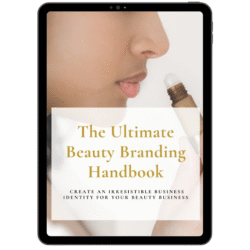How To: Successful Makeup and Beauty Branding
In the makeup and beauty industry, branding serves as a significant determinant of a product’s success.

As this sector continues to evolve, consumers’ tastes and preferences do as well, making the competition fiercer than ever. Branding, therefore, acts as the key differentiator that sets a product or service apart. It establishes the identity of a product line or company but also communicates its unique selling proposition and value to potential consumers.
A well-crafted brand can connect on an emotional level, build trust, and create a loyal customer base.
It can communicate the quality, performance, and benefits of the products, fostering customer expectations and experiences.
Ask me anything about visual design!
Moreover, effective branding in the makeup and beauty industry goes beyond merely creating a captivating logo or catchy tagline; it encompasses a holistic strategy that encapsulates the brand’s vision, mission, values, and story, all of which resonate with the target audience and drive the brand’s overall success.
The Fundamentals of Makeup Branding
Makeup branding goes beyond just selling products; it involves creating a unique identity that embodies the essence, vision, and values of your makeup line.
It’s a comprehensive approach to shaping the perception of your brand in the consumer’s mind.
At its core, makeup the branding process is about consistency in message and experience across all touchpoints – from product packaging and website design to customer service and social media interactions. This consistency helps build recognition, trust, and loyalty among consumers, influencing their purchasing decisions.
Key elements of cosmetic branding include the brand name, logo, color scheme, and typography, which form the visual identity.
However, it extends to aspects like brand voice and personality, quality, and type of products, target audience, and brand promise. An effective makeup brand also tells a compelling story, connecting emotionally with its audience and inspiring them to be part of that narrative.
Understanding the makeup cosmetics branding process is crucial because it shapes your cosmetics brand’s image in the market, influences consumer perception, and ultimately drives your cosmetics business’s success.
The elements that contribute to a successful makeup brand
1. Quality Products:
At the heart of a successful makeup brand are top-quality, reliable products that meet customer needs and expectations. This creates a loyal customer base and beauty community that trusts and repeatedly returns to your brand.
2. Brand Identity:
This involves a unique and consistent logo, color scheme, and overall aesthetic that distinctly sets your brand apart in a crowded marketplace, resonating deeply with your target markets.
3. Understanding the Target Market:
Having a comprehensive understanding of your target customers—their needs, preferences, and behaviors—is crucial. This knowledge guides the development of your products, your branding efforts, and marketing strategies.
4. Effective Marketing:
Leveraging a range of marketing channels—from social and paid media and campaigns to influencer collaborations—is key to boosting brand awareness, reaching your target audience, and driving sales.
5. Adaptability:
The beauty industry is fast-paced and constantly evolving. The ability to adapt to changing trends, consumer behaviors, and industry regulations is a key trait of successful makeup brands.
A Case study of successful makeup branding strategies
Let’s consider the branding strategy of Fenty Beauty by Rihanna.
Launched in 2017, the brand disrupted the beauty industry with its commitment to diversity and inclusion, offering an unprecedented 40 shades of foundation, thus catering to an extensive range of skin tones typically underserved by mainstream brands.
This bold move, underpinned by Rihanna’s star power, resulted in a powerful brand message of inclusivity that resonated globally. Their clever marketing campaigns leverage social media and influencer marketing effectively, further amplifying their reach.
As a result, Fenty Beauty achieved over $100 million in sales within its first 40 days, setting a new standard in makeup branding.
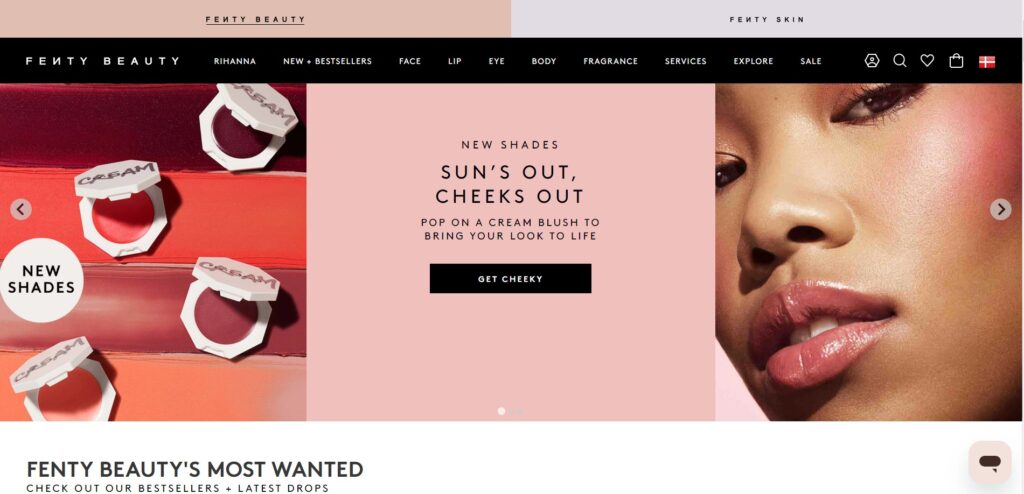
Building a Strong Cosmetics Brand
Building a strong cosmetics brand involves more than merely developing high-quality products.
It requires defining the brand’s unique brand elements and crafting an identity that can distinguish it from the myriad of competitors in the market.
A cosmetics brand is not just a name or logo; it’s a comprehensive representation of your cosmetics company’s ethos, values, and promises to your customers. It serves as the blueprint for everything your cosmetics company does, from the product development process to marketing strategies and customer service.
The unique elements of a cosmetics brand include its visual identity (logo, color scheme, typography), brand voice (the tone and style of its communications), and brand personality (the human characteristics attributed to the brand).
These elements should be carefully chosen to resonate with your target audience and reflect the essence of your brand.
Moreover, a strong cosmetics brand also includes a compelling brand story that can connect with potential customers on an emotional level. It showcases the brand’s journey, its mission, and the passion behind the products, making the brand relatable and memorable.
This consistency builds trust, which is integral to fostering brand loyalty and ultimately achieving long-term success in the competitive, cosmetics market industry.
10 Key Points to standing out as a beauty brand in a competitive market
In the fiercely competitive beauty industry, standing out requires a distinctive strategy.
Here are some keys to making your beauty brand shine:
1. Unique Selling Proposition (USP): Determine what sets your own product sales line of products apart from other brands. It could be an innovative formulation, sustainable practices, or targeting a niche market. Emphasize your unique selling points in every aspect of your branding and marketing.
2. Brand Identity: Create a memorable brand identity. Consistency in your brand’s visuals, voice, and messaging across all platforms helps cultivate recognition and loyalty.
3. Understand Your Audience: Knowing your target audience inside out is vital. Tailor your products and messaging to address their needs, preferences, and values.
4. Quality and Innovation: Continually offering high-quality, innovative products helps keep your brand relevant and exciting.
5. Engaging Storytelling: Share your brand’s story and values. Customers connect with brands that have relatable narratives and shared values.
6. Excellent Customer Service: Providing exceptional customer service can turn customers into brand advocates.
7. Influencer Partnerships: Collaborate with influencers who align with your own brand values. They can significantly boost your brand’s visibility and credibility.
8. Sustainability: In the modern global beauty market and landscape, commitment to sustainability can greatly differentiate your brand. Demonstrate this through eco-friendly packaging marketing materials, ethical sourcing, and cruelty-free testing.
Through these strategies, your beauty brand and cosmetics business can distinguish itself and flourish in the competitive global beauty and cosmetic market now.
The traits of a successful cosmetic brand
A successful cosmetic brand typically embodies the following traits:
1. Quality and Consistency: High-quality, reliable products form the foundation. Consistency in product quality and brand messaging reassures consumers and builds loyalty.
2. Innovative Approach: Regular innovation in product formulation, packaging design, and marketing strategies keep the brand fresh and exciting, attracting and retaining customers.
3. Strong Brand Identity: A distinct and cohesive brand identity, encompassing everything from visual design to brand voice, sets the brand apart from its competitors and resonates with its target audience.
4. Customer-Centric Approach: Successful brands listen to their customers, understand their needs and preferences, and use this knowledge to guide their product development and marketing.
5. Commitment to Values: Brands that stand by their values—whether it’s sustainability, cruelty-free practices, or inclusivity—resonate with consumers who share these values, forging strong emotional connections.
6. Adaptability: The ability to adapt to market trends, customer behavior, and industry changes is crucial in the dynamic cosmetics industry.
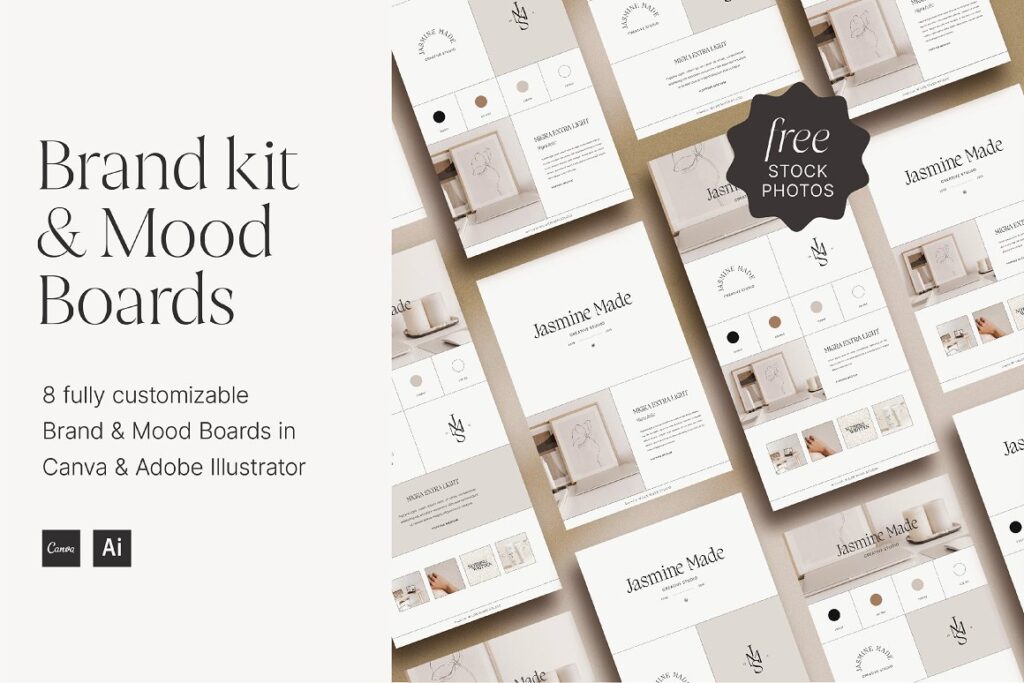
The Bootstrapped Beauty Brand: Starting With No Money
A successful cosmetic brand typically embodies the following traits:
1. Quality and Consistency:
High-quality, reliable products form the foundation of customer relationships. Consistency in product quality and brand messaging reassures consumers and builds loyalty.
2. Innovative Approach:
Regular innovation in product formulation, packaging design, and marketing keeps the brand fresh and exciting, attracting and retaining customers.
3. Strong Brand Identity:
A distinct and cohesive, branding strategy, encompassing everything from visual design to brand voice, sets the brand apart from its competitors and resonates with its target audience.
4. Customer-Centric Approach:
Successful brands listen to their customers, understand their needs and preferences, and use this knowledge to guide their product development and marketing.
5. Commitment to Values:
Brands that stand by their values—whether it’s sustainability, cruelty-free practices, or inclusivity—resonate with consumers who share these values, forging strong emotional connections.
6. Adaptability:
The ability to adapt to market trends, customer behavior, and industry changes is crucial in the dynamic cosmetics industry.
The success story of a beauty brand that started with minimal funding
A striking example of a beauty brand that started with minimal funding is Glossier, founded by Emily Weiss.
In 2010, Weiss started a beauty blog named “Into the Gloss” while working as a fashion assistant at Vogue. The blog, providing beauty tips and product reviews, quickly gained a dedicated following.
Weiss leveraged this audience to launch Glossier in 2014, initially offering just four products.
She focused on the direct-to-consumer model, selling products exclusively through the brand’s website to maintain control over the customer experience and keep costs low.
Glossier’s marketing strategy was revolutionary for its time.
Weiss prioritized a strong online presence in the form of social media posts and user-generated content over traditional advertising, relying on Instagram and her blog’s readership to spread the word. Glossier also made heavy use of influencer partnerships, often with micro-influencers who shared Glossier’s target demographic.
A strong commitment to customer engagement also set Glossier apart.
The brand famously develops products based on the customer feedback, and needs of its consumers, fostering a community and creating products that its loyal customers will genuinely want and love.
Despite starting with limited funds, Glossier, through its innovative approach to product development and marketing, became a disruptor in the beauty industry.
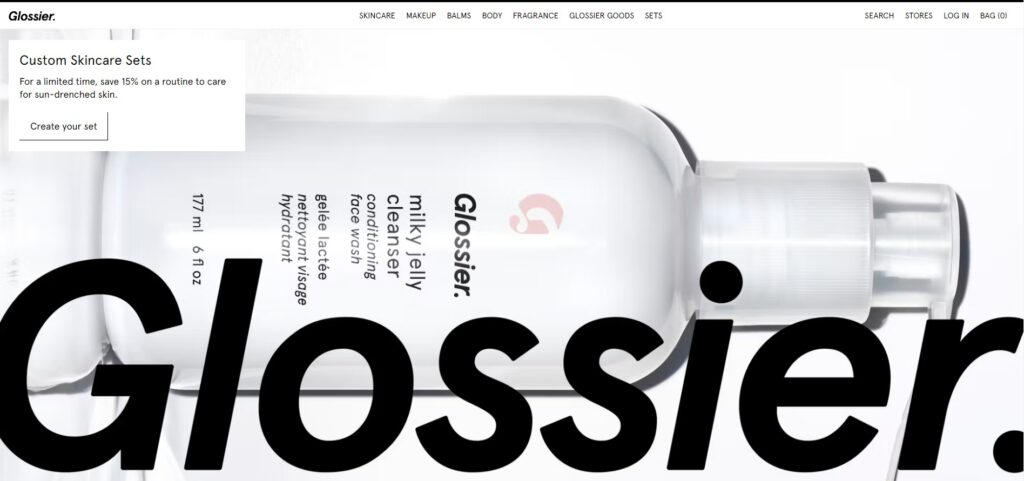
Discovering Your Unique Beauty Brand
Discovering your unique beauty brand is a journey of introspection and market research.
It requires understanding your brand’s core elements, such as its mission, vision, and values, which serve as the foundation of your enterprise. Equally important is recognizing your target audience’s needs, wants, and preferences.
Your USP – the distinctive product, service, or feature that sets you apart – is another crucial component. Identifying these elements and seamlessly integrating them results in a unique, cohesive brand.
Remember, authenticity is key; a genuine brand that resonates with its audience will always stand out in the market.
Strategies for brand positioning in the makeup and beauty market
Brand positioning in the makeup and beauty sector involves establishing a unique place in consumers’ minds for your cosmetics line or brand, setting it apart from competitors. Here are some strategies to achieve this:
1. Understand Your Target Market: Deeply understanding your audience’s needs, preferences, and motivations is the first step. Use market research to gather this data.
2. Define Your USP: What makes your brand different? It could be anything from innovative products, sustainable practices, unique formulations, or a niche focus. Your USP should connect with your audience’s needs or desires.
3. Align with Consumer Values: Today’s consumers increasingly choose brands that align with their personal values, such as cruelty-free, eco-friendly, or inclusive brands.
4. Create a Consistent Brand Experience: Consistency in your branding, messaging, and customer interactions reinforces your brand positioning and builds trust.
5. Regularly Reevaluate Your Positioning: The makeup market is dynamic, and consumer preferences can change. Regularly reassessing your positioning ensures you stay relevant and have a competitive advantage.
Position As A Fun, Playful Beauty Business
Your business’s style:
Optimistic, lively, and moving. Positive, youthful, surprising, personal, welcoming, informal, enthusiastic, warm, soft, fun, cute, fresh, clean, clear, and simple.
Read more about it: Brand Design 1: How To Create a Youthful, Happy Branding
You will find much more detailed guidelines here: Brand Your Beauty Business
Great for: Fun and lively nail shop, kid’s hair salon, makeup brands for kids, skincare brands for kids etc.


Position As An Elegant, Feminine Beauty Business
Your business’s style: Understated, soft, timeless, delicate, romantic, graceful, elegant, and traditional.
Brand Design 2: How To Create a Feminine, Elegant Branding
You will find much more detailed guidelines here: Brand Your Beauty Business
Great for: Elegant and understated beauty salons, skin care for women, most higher-end makeup brands.
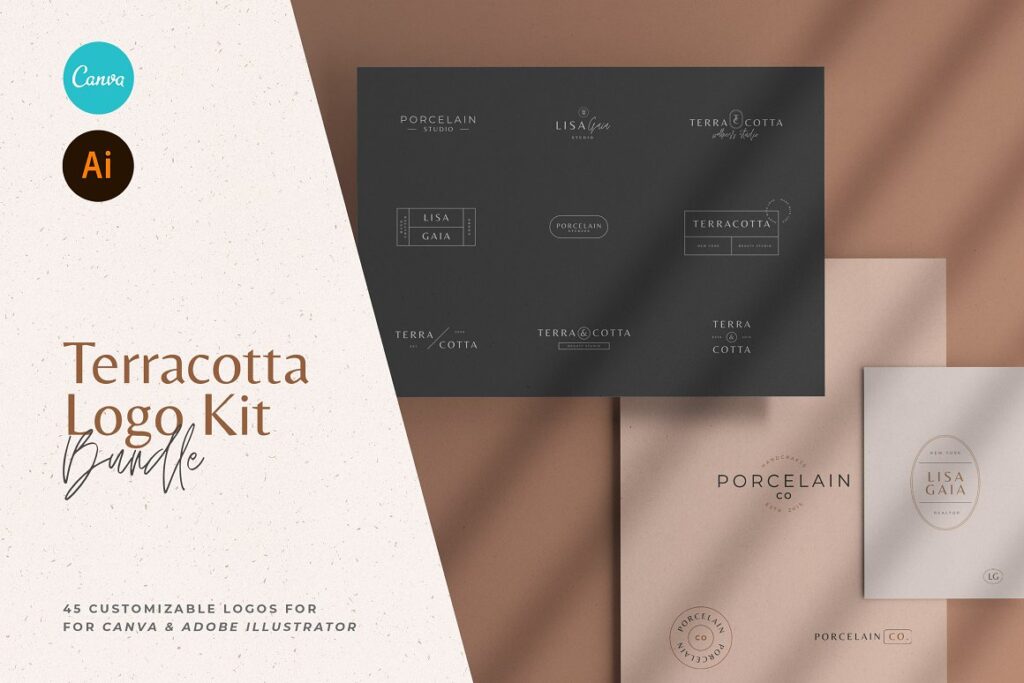
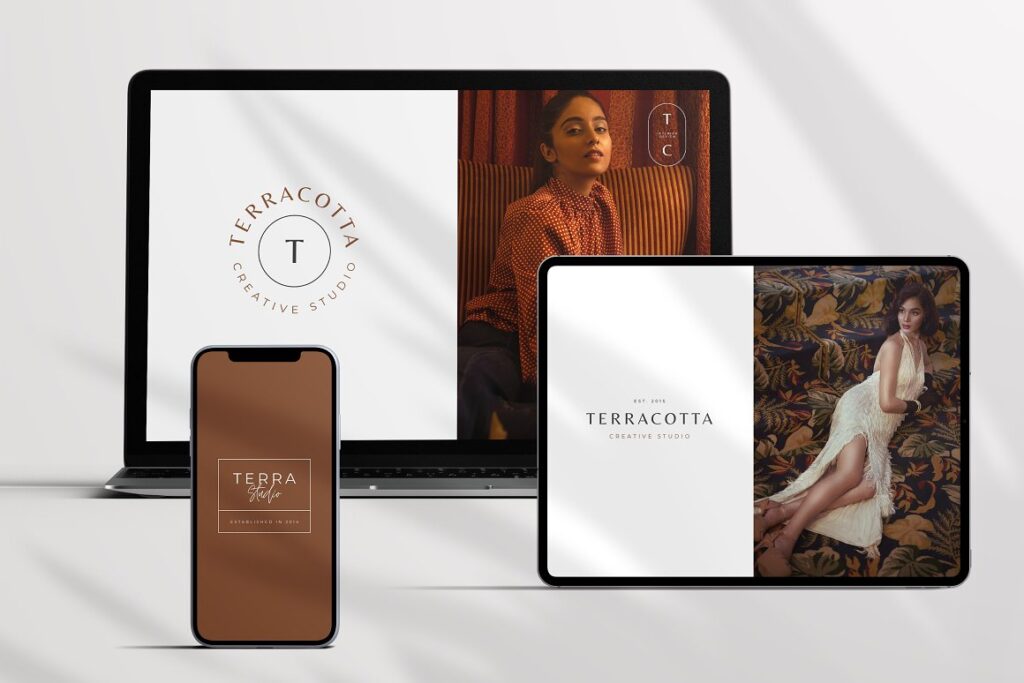
Position As an Earthy, Authentic Beauty Business
Your business’s style: Earthy, authentic, and warm. Can also be bold, masculine, and moody. Abundant, cozy, nostalgic, and warm.
Brand Design 3: How To Brand An Earthy, Community-Focused Business
You will find much more detailed guidelines here: Brand Your Beauty Business
Great for: Barbershops, organic skincare, and makeup brands, nature-friendly beauty services, and everything retro and sustainable.
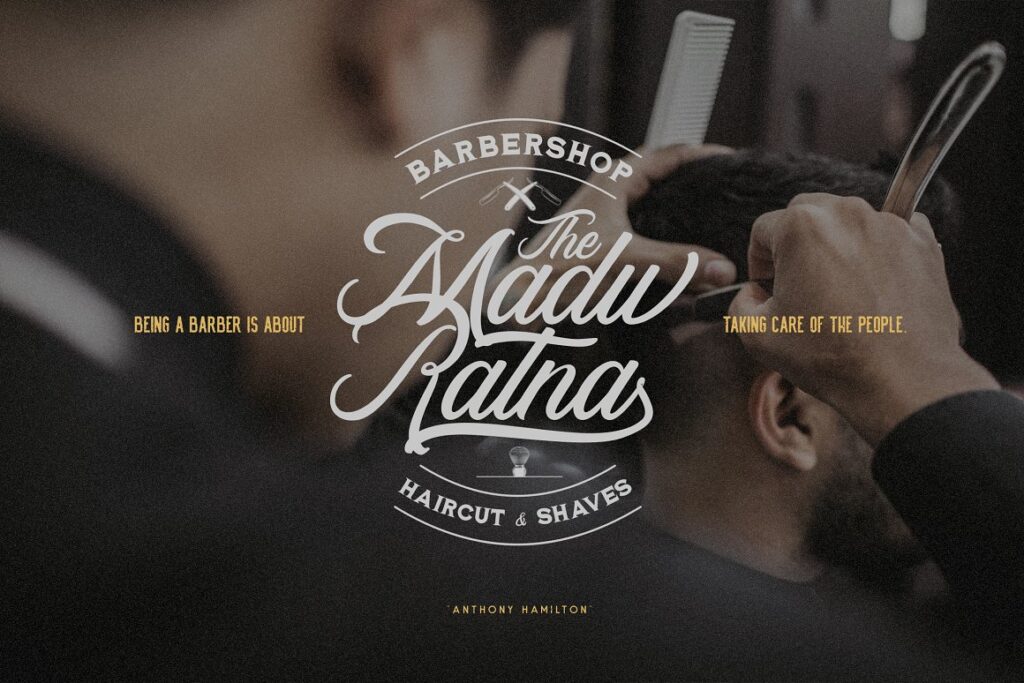
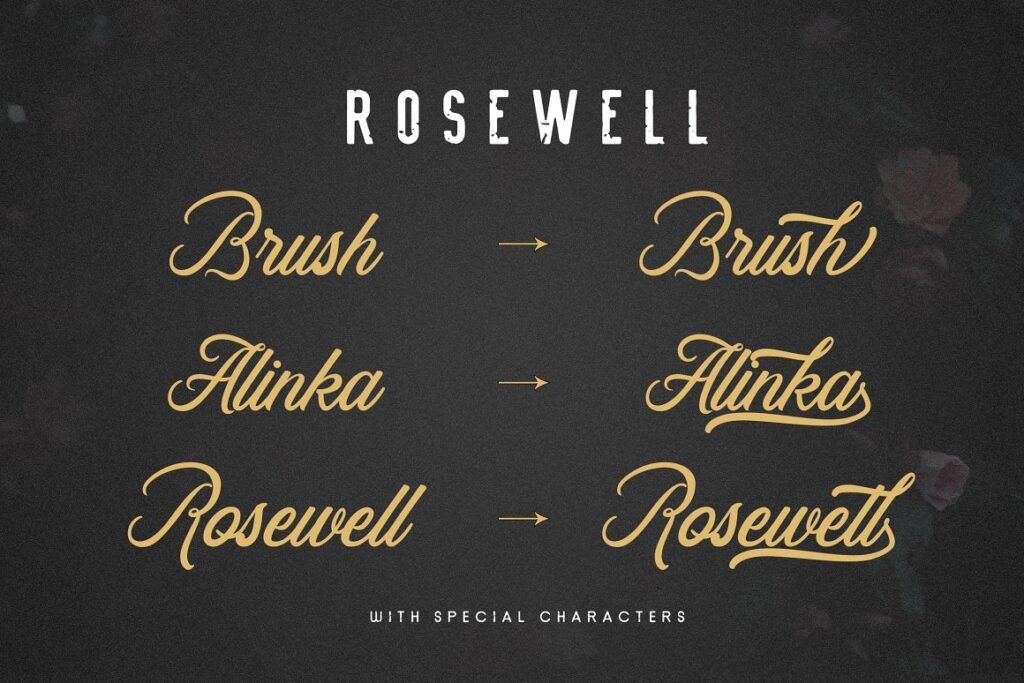
Position As a Premium, High-End Beauty Business
Your business’s style: Outstanding, confident, luxurious, inflexible, intense, dramatic, glamorous, practical.
Brand Design 4: How To Style A Luxury Branding
You will find much more detailed guidelines here: Brand Your Beauty Business
Great for: Luxury beauty services – hair, nails, lashes, facials…, premium skincare and makeup brands, cosmetic surgery.
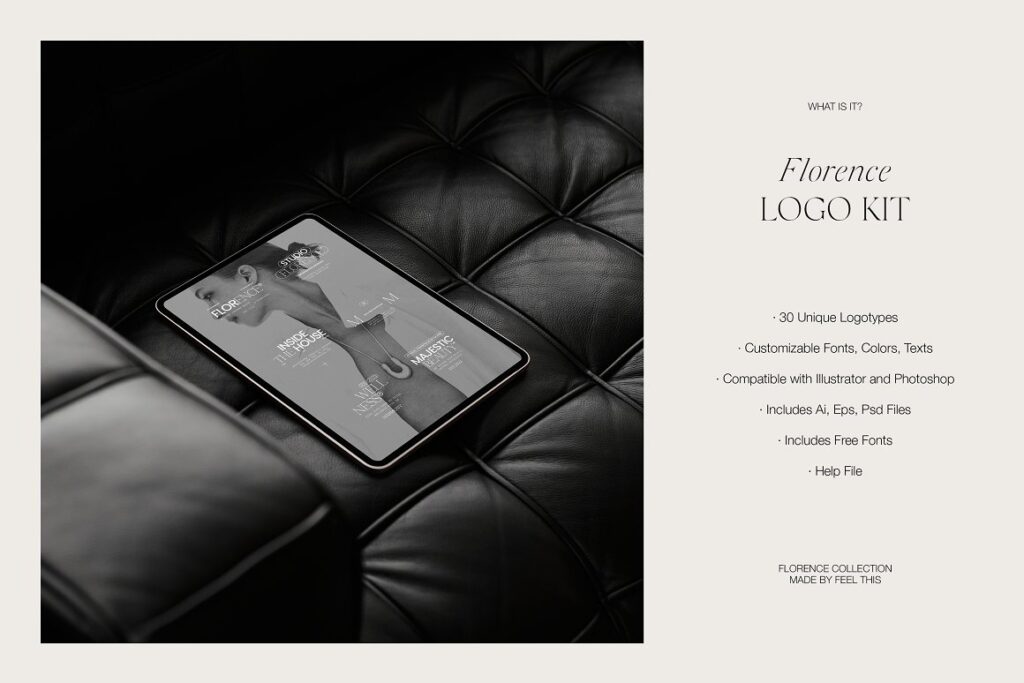
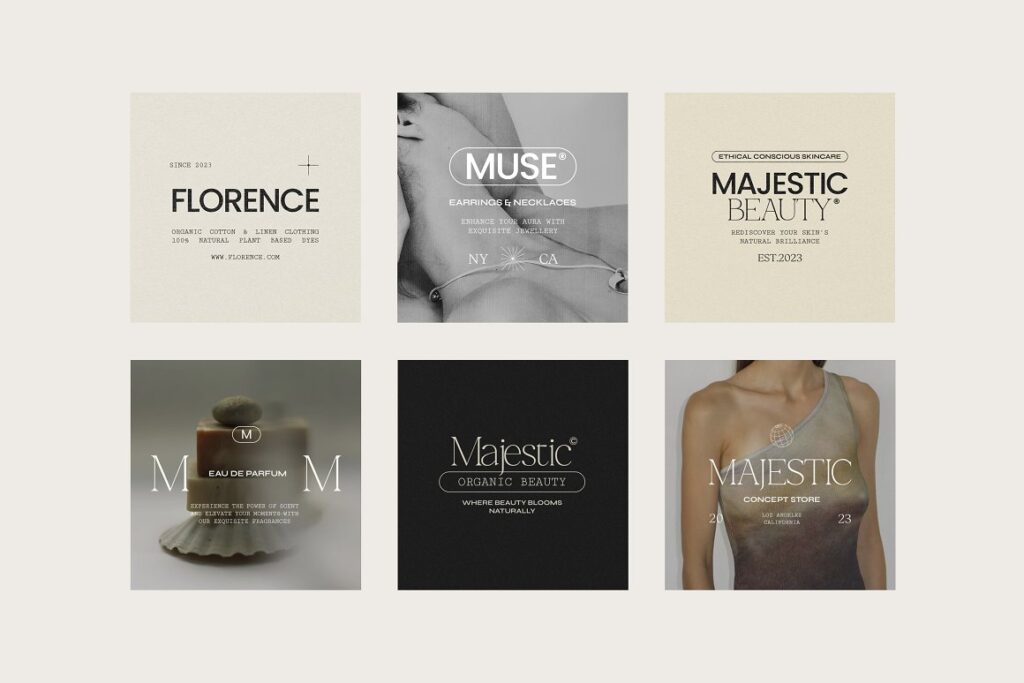
The Characteristics of a Successful Cosmetic Brand
Here’s a list breaking down the key characteristics of a successful cosmetic brand:
1. Quality Products: The products are high-quality, effective, and meet or exceed customer expectations.
2. Distinctive Branding: The brand has a unique identity, including a distinctive visual style and brand vibe that sets it apart from competitors.
3. Understanding of Target Market: The brand has a deep understanding of its target customers and tailors its products and marketing to their needs and preferences.
4. Innovative Approach: The brand consistently innovates, whether in product development, marketing activities, or customer engagement.
5. Commitment to Values: The brand stays true to its values, which may include sustainability, cruelty-free practices, inclusivity, etc.
6. Excellent Customer Service: The brand is dedicated to providing exceptional customer service, which fosters customer loyalty.
7. Effective Marketing: The brand uses a range of strategies for marketing, including online visibility, influencer partnerships, and content marketing, to reach its audience.
8. Adaptability: The brand is adaptable and responsive to changes in market trends, customer preferences, and industry regulations.
9. Consistency: The brand maintains consistency across all its touchpoints, from the quality of the products to branding to customer service.
10. Transparency: The brand is transparent about its products, ingredients, manufacturing processes, and business practices, which builds trust with customers.
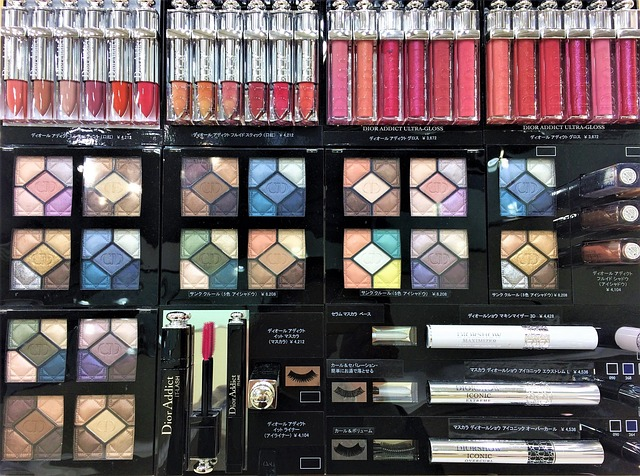
Strategies for aspiring cosmetic brands to emulate success
As an emerging beauty company, learning from the success of others in the cosmetics industry can prove beneficial. Here are some strategies to consider:
1. Emphasize Quality: Successful beauty companies prioritize the development of top-notch, effective products that customers love and trust.
2. Carve Out a Unique Identity: Differentiation is key in the crowded beauty sector. Establishing a distinct visual style, social media, brand voice, and value proposition can help you stand out.
3. Understand Your Audience: Deeply understanding your target customers allows you to tailor your products and marketing efforts to their needs and preferences.
4. Innovation is Vital: Continually innovating, both in product development and marketing, keeps your business fresh and exciting.
5. Leverage Social Media: Digital marketing, particularly social media, and influencer collaborations, can help boost your visibility and reach.
6. Commit to Your Values: Consumers appreciate businesses that stand by their values, whether that’s sustainability, inclusivity, or cruelty-free practices. Consistently demonstrating these values can foster customer loyalty.

Establishing a Brand Identity for Your Beauty Business
Establishing a unique persona for your beauty enterprise is crucial in distinguishing your offerings from the competition and connecting with your target audience.
This distinctive persona, or identity, extends beyond the visual branding elements like your logo or color scheme—it also includes your company’s values, mission, and the emotional resonance you wish to create.
Understanding this concept is essential because it forms the foundation of all your company’s actions, guiding product development, marketing efforts, and customer service policies. It also shapes how customers perceive your business, influencing their buying decisions and their loyalty to your enterprise.
One key factor is consistency across all touchpoints—from your website and social media presence to product packaging and customer interactions.
This consistency helps build recognition, trust, and loyalty among consumers.
A strong identity often communicates a compelling narrative, fostering an emotional connection with your audience and making your beauty business more memorable.
Practical steps for creating a strong brand identity
1. Define Your Brand’s Purpose and Values: Your brand’s purpose is the ‘why’ behind its existence, and its values are the principles guiding its actions. Defining these gives your brand a direction and a soul that consumers can connect with.
2. Understand Your Target Audience: Research your ideal customer’s demographics, psychographics, needs, and preferences. This understanding will guide the creation of an identity that resonates with your audience.
3. Create Your Visual Identity: This name must have branding elements that include your logo, color scheme, typography, and packaging. These brand elements should be distinctive, cohesive, and reflective of your brand’s purpose and values.
4. Develop Your Brands Voice: Your brand’s voice is the style and tone of your written and spoken communications. It should align with your brand’s personality and appeal to your target audience.
5. Ensure Consistency: Maintain consistency in your branding across all platforms and touchpoints. Consistency reinforces recognition, builds trust, and strengthens your brand in the minds of consumers. Over time, this consistency will pay off in the form of increased brand loyalty and brand recognition itself.
Conclusion
The landscape of makeup and beauty branding is vibrant and continuously evolving.
In such a dynamic environment, brands must remain adaptable and innovative. Prioritizing quality, understanding the target audience, and cultivating a unique brand persona is essential. Sustainability, inclusivity, and customer engagement are no longer optional, but a necessity.
The rise of social media channels and influencer marketing run by beauty influencers offers novel ways for cosmetics brands to have visual platforms to connect with consumers and enhance brand visibility.
Despite the challenges, the opportunities in the beauty sector are immense for those prepared to navigate its complexities and seize its potential.
Last Updated on 28/04/2025 by Victoria Silber



